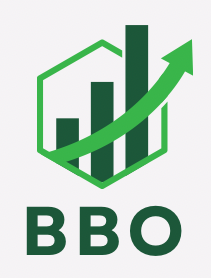
Identifying a niche is key but can be tricky. Think of what catches your interest and where there’s a demand. Combining passion with market needs ensures that you’re driven and not just in it for the money.
Dive into market research. Scour the internet, read industry reports, join forums, or conduct surveys. The goal is to ensure there’s an audience ready and willing to purchase.
Analyze competitors. Check their websites, social media, and customer reviews. This helps in understanding what works and what doesn’t, and how you can offer something a little different or better.
Stay updated with market trends. Use tools like Google Trends to see what’s hot and what’s not. Trends can offer insights into customer preferences and potential gaps that your business could fill.
Step 2: Building Your Business Plan
Laying a solid foundation with a well-thought-out business plan sets you up for success. Start with defining your business model and revenue streams. Are you going for an e-commerce store, a subscription service, or maybe a mixture of both? Knowing this helps chart your path forward.
Draft a detailed business plan. This document should cover everything from your value proposition and target audience to marketing strategies and financial projections. While it might sound daunting, there are plenty of templates and guides online to ease the process.
Goals and milestones are essential. Whether it’s hitting a certain revenue target or expanding your product line, setting clear objectives helps keep you focused and motivated. Remember, goals should be SMART — Specific, Measurable, Achievable, Relevant, and Time-bound.
Budgeting is the backbone of your plan. Outline all initial expenses, such as website development, marketing, and inventory costs. Don’t forget to account for ongoing expenses like subscriptions and utilities. Knowing your financial commitments upfront helps avoid unpleasant surprises down the line.
Step 3: Setting Up Your Online Presence
Choosing and registering a domain name is a crucial first step. Your domain should be easy to remember and spell, relating closely to your business name or niche.
Next up, picking a reliable hosting provider. The hosting provider ensures your website runs smoothly and can handle the traffic. Look for providers with good reviews, excellent customer service, and solid uptime records.
Creating a user-friendly and responsive website is non-negotiable. Opt for clean design, intuitive navigation, and a mobile-friendly layout. A great website is the first impression most customers will have of your business.
SEO optimization can’t be ignored. Optimize your website with relevant keywords, meta tags, and alt text for images. This helps your site rank higher in search results and attract more organic traffic.
Social media profiles are another key part of your online presence. Choose platforms that your target audience frequents. Consistent branding across all channels helps build trust and recognition with potential customers.
Launching and Marketing Your Business
Creating a strong launch plan makes your business debut exciting. Build anticipation through teasers on social media, a countdown on your website, and even a special launch event. Engage with your audience actively to build excitement.
Digital marketing strategies are your best friends. Content marketing, such as blogging and videos, introduces your brand to a broader audience. Email marketing keeps your audience in the loop with news, offers, and updates, making them feel involved.
Build relationships with influencers and partners in your niche. They already have your target audience’s trust and can help spread the word about your business. Collaborations can boost your credibility and reach.
Tracking performance is crucial for growth. Use analytics tools to monitor website traffic, social media engagement, and sales. Data helps in making informed decisions and tweaking strategies for better results.

